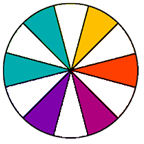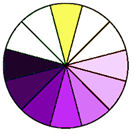Saturday, January 29, 2011
Valentines Day Alphas
Friday, January 28, 2011
Creating the glass effect
First we will need to create a new image to do this
Go to file and select new the new image box will open and you will need to place the following information.
For a full size Scrapbooking Element you will use {Width 200…Height 200… Units Pixels … Resolution 100} in the image Characteristics section have the Raster Background selected as well as the Transparent selection checked.
For a Tagger Size Element you will use {Width 600…Height 600… Units Pixels … Resolution 300} in the image Characteristics section have the Raster Background selected as well as the Transparent selection checked.
Now that you have your blank working area we can create the glass orb.
1. Go to Effects… Distortion Effects and then click on Warp.
2. We will only change the settings here to Size 50…. And Strength 90 then click ok
You will have something that looks like this
Giving your glass demention
4. Settings for the drop Shadow box are offset: Vertical 8… Horizontal 8… Attributes: Opacity 75… Blur 40…and the color black then click ok when finished.
You have completed this tutorial and should have a finished glass stone that looks something like this.
Now to have fun and play with what we just learned
The easiest thing to change and play with is to colorize your stone simply go to
1. Adjust… Hue and Saturation…then Colorize
Here are a few examples:
1. Go to Effects and select Artistic Effects now select balls and bubbles
2. Click on the maps Tab.
3. If you check the bump map box and choose an image it will add that texture to your glass play with the settings till you create the effect you want.
I hope you had fun with this tutorial and would love to see your results !!!!
Friday, January 7, 2011
How to Choose a Color Scheme
We will be starting with a basic color wheel, along with some of the terms you should know. A must have for any artist who is working with colors is a color wheel which shows the relationship of colors to each other.
Here is a basic color wheel now lets break it down so you can understand it better
There are three primary colors (red, blue, yellow)
The tertiary colors are created when a primary color is mixed with one of the secondary color such as red-orange, yellow-green and blue-violet.
When you mix a color with gray, you create "tones" of the color.
When you mix a color with black, you create "shades" of the color.
When you mix a color with white, you create "tints" of the color.
The color value is determined by the lightness or darkness of a single chosen color.
Now for color combinations
There are several combinations of these colors that are pleasing to the eye when used.
Complementary colors would be your main color and the color that is directly opposite it on the wheel. This tends to give a very bold, dramatic effect.
Split Complementary colors are the two colors on either side of the complement color plus your main color. This can add a bit of sophistication.
Triad colors would be every fourth color on the wheel, thus forming a triangle. A primary triad is bright and youthful, secondary colors are more subtle, and triads made up of the tertiary colors are sophisticated and fashion-oriented.
Analogous colors are three to five colors which are next to each other on the wheel. This would be your main color, along with either one or two colors on either side of it. You can really make it pop by putting in a touch of the complementary color as well.
Monochromatic would be different values (light & dark) of your key color. Using different tones, tints and shades of your key color is pleasing to the eye and creates unity. Again, a little bit of the complementary color can really enhance a monochromatic color scheme.
To start your color scheme, choose your "Main" color. This main color will be present in about 70% of your creation, 20% of a secondary color will be present in your creation, and last your accent color which will be present in about 10% of your creation.
If you are creating for use with a special photo pull your main color right from your photograph and apply the above color rules. Have fun and play with your color choices till you hit that magic combination that really makes you say wow
Here is a list of some of my favorite online color scheme generators.
http://colorschemedesigner.com/
http://www.colorsontheweb.com/colorwizard.asp
Saturday, December 18, 2010
Blog Visitors
Wishing you all a great Holiday Season.. Keep on Scrapping and Crafting :)
Saturday, November 6, 2010
Ready for a new look and fresh creations :)
Saturday, April 11, 2009
Creating Papers 1 EZ Stripes and Patterns
Creating Papers Tutorials
Creating coordinating striped papers to go with your layouts
1. Choose The photo that you want to use.
I will be using this picture as an example. Aww arnt they cute hehehehe
2. Duplicate the photo and close the original.
3. Use the rectangle selection tool to select a portion of the image to get the colors you want to use.
My Selection
4.Choose Effects Image Effects Offset.
And use the following settings play with the horizontal offset settings till you get something you like
Here is what I ended up with
5.Ok time to resize and get proper dpi
Goto: Image / Resize
Set Width to the size of your paper if you don’t want the pattern to re-pete.
This is how mine is set.
If you want it to be a repeating pattern it would be set to less than the size of the paper.
Set The Resolution to 300 dpi
6. Now save Goto; File / Export / Jpg Optimizer and save
When you want to use simply open a new image and use this image as a fill and you have a great striped paper.
And this save massively on storage space.
Part 2 Endless papers to make from these simple stripes
Start with Opening one of your stripe Pattern Fills
I will be using the one I made in Part 1 Of this tutorial.
A. Simple way to get that Corrugated Paper look
1.Create a new Layer
2.Set To Gradient in the Materials Pallet On the foreground color
3. set the Background color to Black
4. Fill new layer with the black Gradient
You will end up with something like this. It gives a metallic tube look to it
Settings I used for the fill play with these to get what you like.
5. Adjust the Opacity to your liking and there ya have it a corrugated looking paper fill
You can use this Technique over any finished paper to get this look.
B. Pattern Play
Again I will be using the Pattern Fill I made in Part 1 Of this tutorial.
Only one step here to make a million papers
1 Goto : Effects / Reflection Effects / Pattern
Now just play with the settings and your done.
Here are a few Samples of how mine turned out.
I hope you have a ton of fun playing with this J
Thursday, January 15, 2009
Lets Make A Bottlecap
Bottlecap Tutorial
IBAScrappin1 AKA Cheryl
2 Cut down on the length of this tutorial I have supplied some templates.
Get Them Here
While doing this tutorial it is a good idea to save your settings in the different effects, so when you goto make another one they are already there for you
If you need some ideas for caps check out this site http://www.bottlecaporama.com/
1 Use your magic wand to mask the template image(keep masked till told to unmask)
2.Goto Effects/3d Effects /Inner Bevel use these settings

1 Create a new layer.
2. Using the paintbrush round shape, size 258 for tagger size cap, size 390 for scrap booking size
Paint your top color in the center of your cap base it should look something like this

4. Goto Effects > Artistic Effects > colored edges and use these settings: the color you choose should be a lighter shade of the color you are using.

You should have something like this but in your color

6 Use the Raster Deform tool to size your cap top so that it is how u want it. Unmask when finished.
In this sample I have made it a little longer to cover the white spot on the top and bottom

Note : if you want color the bottom part simply use the dropper and get the color off the top and use the change to target brush tool on the bottom of your cap Then goto adjust /brightness darkness to get the look you want. And change to target brush tool 1 more time . And it will look something like this.









































